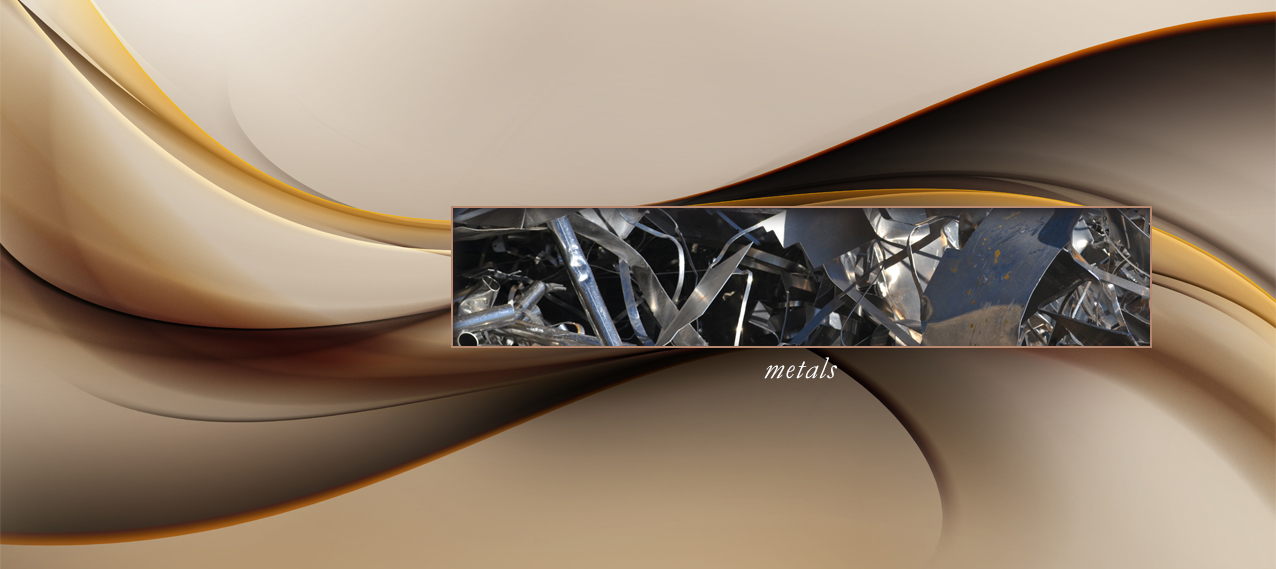In addition to the main metals, we also sell other metals of considerable importance such as steel, alloy steel, molybdenum, titanium and tungsten.
Steel
Steel was first obtained in 1740 by Benjamin Huntsman in Sheffield by melting pig iron in a crucible. This process spread and developed rapidly in England and for a long time was the cause of England’s pre-eminence in the art of steelmaking.
The term steel is the generic term for an alloy of two main elements: iron and carbon.
Other elements present in steel are: manganese, phosphorus, sulphur, silicon and in smaller quantities nitrogen, aluminium and oxygen.
Iron (Fe) is a metallic element, while carbon (C) is a non-metallic element and is the main alloying element in steel alloys; together with other elements, it acts as a hardening agent.
The intentional addition of other elements such as nickel, chromium, molybdenum, manganese, titanium, boron, niobium and vanadium changes the characteristics of steel.
By changing the quantity of elements in the alloy, it is possible to adjust the properties of the steel:
Cambiando la quantità degli elementi nella lega, si controllano le proprietà dell’acciaio:
- hardenability;
- hardness;
- toughness;
- ductility;
- brittleness.
In addition, steel is renounced as a metal that is resistant to:
- corrosion;
- tension;
- wear;
- heat.
Molybdenum
In 1778, Carl Wilhelm Scheele was the first person to prepare molybdic acid by treating molybdenite with nitric acid. The metal was isolated four years later by P.J. Hjelm.
Silvery grey in colour, molybdenum (Mo) can be defined as a “heavy” metal (density 10.22 kg/dm3), with considerable elasticity (about 1.5 times that of steel), a low thermal expansion coefficient and a very high melting point (2610°C). It has good tensile strength, low hardness and good corrosion resistance, although it oxidises at over 600°C.
Molybdenum belongs to the same group as chromium, although with more pronounced influence, and forms very hard and stable carbides. It gives steel its magnetic properties and its presence gives steel good workability when both hot and cold, as well as a decent weldability.
Titanium
Discovered by William Gregor in 1791, titanium (Ti) is a metal with low density, high strength, low modulus of elasticity, low thermal conductivity, low thermal expansion, excellent corrosion resistance, is easy to process, biocompatible, magnetic and, thanks to its high melting point, is able to withstand extreme temperatures. In addition, titanium is immune to the corrosion by salt water or marine environments and is exceptionally resistant to a wide range of acids, alkalis, natural waters and industrial chemicals. Finally, it offers excellent resistance to erosion, cavitation and impacts.
Tungsten
Tungsten was discovered in 1781 by R.W. Scheele in an ore named after him and was prepared in its compact state only in 1909. Since then it has been exploited both pure, especially by virtue of its high melting point (3410°C, the highest of all metals), and as an alloy with other metals. Tungsten is a shiny, silvery-white metal which is resistant to attack by oxygen, acids and alkalis.
The high melting temperature of tungsten makes it an excellent choice for structural applications subject to high temperatures. At low temperatures, its high modulus of elasticity, high density and its radiation shielding properties can be exploited.
Tungsten and its alloys are produced by powder metallurgy. They are then pressed, sintered and forged into sheets, bars or wires.
